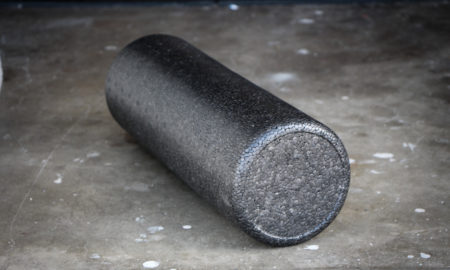

Try this 5-4-3-2-1-blastoff strategy for big gains with your big moves.
By Steven Stiefel
No matter how hard you train, you eventually reach a plateau—the inability to push, pull, or squat additional weight or perform more reps. Likely that’s not because of physical limitations or a lack of discipline. It’s almost surely due to the fact that you’ve been following the same training protocol for too long. That’s a quirk we all have: We follow a regimen that’s working for us, believing that it will continue to provide gains. But that’s not the case. The late great Jim Wright, PhD, former exercise physiologist for the US Army was famous for this succinct training philosophy: “Almost everything works, but nothing works forever.” Actually, that’s pretty much the way life works, too.
When you reach a strength plateau, it’s time to try something new. That’s what the 5-4-3-2-1 strategy provides. It’s a great protocol for those who want to boost strength for its own sake or increase the muscle mass that comes when you’re able to lift more weight, stimulating greater muscle growth.
Here’s how it works:
The 5-4-3-2-1 Strategy
This technique is exercise specific. Choose the move where you’ve really hit a wall. Let’s say that’s the bench press. For the next few weeks, you’ll do no chest work other than follow this strength-busting strategy for the bench press, which you’ll incorporate three times a week.
To begin, you should choose a weight for this move that you can perform for about 10 reps. So if you can press 200 pounds for 10 reps, then that’s a good choice as your baseline. For the first set, you perform only five reps. Rest 60 to 90 seconds and then perform your next set, increasing weight but dropping your reps to four. Continue this pattern of increasing weight and decreasing reps until you perform your fifth set of one rep. Keep each rest between sets to that 60- to 90-second window. The entire bench press workout should take you about 10 minutes.
You can continue to follow a typical training split during this phase, but you won’t train your chest otherwise. For instance, start with your 5-4-3-2-1 bench press routine at the start of your legs, back, and shoulder days. Then you can train the rest of your body with as much volume as you want. It’s important for the success of the strategy that you keep volume for this bodypart low to allow for recovery—after all, you’ll be training it three times a week.

Week One
Look at our Week One chart for an example of how to structure your 5-4-3-2-1 bench press workouts. Note that we’ve only increased weight in five-pound increments from set to set. You can also use 10-pound increments if your 1RM is considerably more than the weight you use for 10 reps. On your first day, though, your one-rep set should be considerably lower than your 1RM and relatively easy to perform. Don’t make the mistake of turning the last set into a 1RM. It is supposed to feel relatively easy on Day One.
For your next bench press workout (Day Three), you start with your second-set weight from Day One and continue to increase weight. On Day Five, you start with your third Day One weight, continuing to increase weight.
Here’s your Week One chart:
WEEK ONE CHART:
| DAY | SET ONE
WEIGHT/ REPS |
SET TWO
WEIGHT/ REPS |
SET THREE
WEIGHT/ REPS |
SET FOUR
WEIGHT/ REPS |
SET FIVE
WEIGHT/ REPS |
| 1 | 200/5 | 205/4 | 210/3 | 215/2 | 220/1 |
| 3 | 205/5 | 210/4 | 215/3 | 220/2 | 225/1 |
| 5 | 210/5 | 215/4 | 220/3 | 225/2 | 230/1 |

Week Two
For Day One on Week Two, start with your previous week’s Day Three weights and reps, and continue to increase weights. Each week you’ll be increasing your weights over the previous. Continue to follow this pattern, beginning Week Three with 210 pounds for five reps on Day One.
Week Two Chart:
| DAY | SET ONE
WEIGHT/ REPS |
SET TWO
WEIGHT/ REPS |
SET THREE
WEIGHT/ REPS |
SET FOUR
WEIGHT/ REPS |
SET FIVE
WEIGHT/ REPS |
| 1 | 205/5 | 210/4 | 215/3 | 220/2 | 225/1 |
| 3 | 210/5 | 215/4 | 220/3 | 225/2 | 230/1 |
| 5 | 215/5 | 220/4 | 225/3 | 230/2 | 235/1 |

Movin’ On Up
Keep following this pattern until you eventually fail. When this happens, take a week off from training that bodypart—chest in this case. Then, the following week, repeat your last successful week. Chances are good that you’ll be able to push through your previous barrier when you reach it again the following week.
Strength athletes have learned over the years that you don’t get stronger by following the same plan endlessly. You get stronger by changing up your training protocol. That’s what the 5-4-3-2-1 strategy was designed to provide. Follow it for up to 12 weeks before switching to another training protocol for your chest. At this point, you can then use the use the 5-4-3-2-1 strategy for another move such as deadlifts, squats, or any other compound strength move. IM






















You must be logged in to post a comment Login